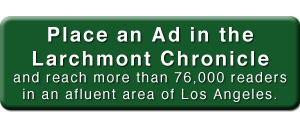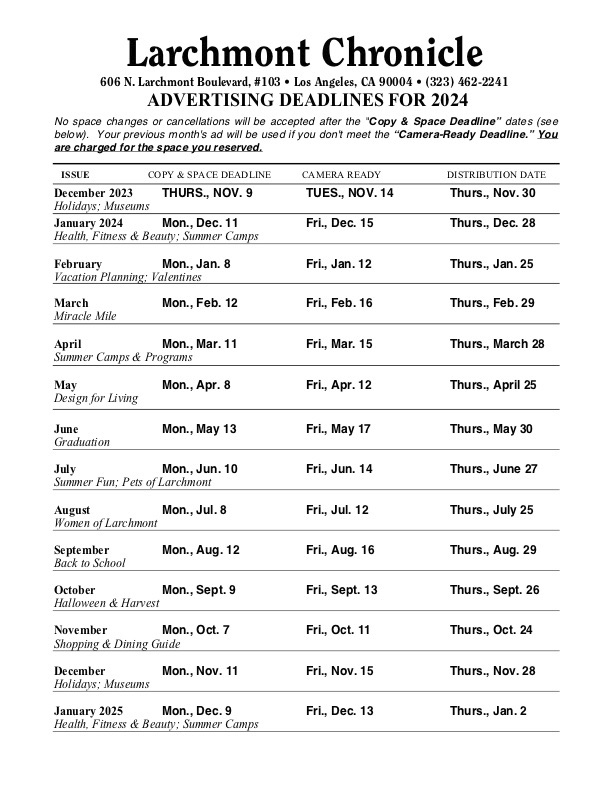McAvoy on Preservation: Designation deadline nears for pre-eminent Los Angeles building
 We use the term “iconic” a great deal. It usually means something that stands out, a “cut above,” something almost everyone recognizes. Landmarks are often iconic by virtue of their style of architecture, a quality that allows instant recognition. City Hall. Walt Disney Concert Hall. The Chinese Theater.
We use the term “iconic” a great deal. It usually means something that stands out, a “cut above,” something almost everyone recognizes. Landmarks are often iconic by virtue of their style of architecture, a quality that allows instant recognition. City Hall. Walt Disney Concert Hall. The Chinese Theater.
The historic preservation movement in Los Angeles is almost six decades old. We adopted our cultural heritage ordinance in 1962. Since then, we’ve placed approximately 1,100 sites on our list of landmarks.
The ordinance, recently updated, states three criteria that a site or building must exemplify in order to be considered for landmark status. Based on national criteria formulated by the National Park Service, properties should meet one of three criteria: (1) be identified with important events of national, state, or local history or exemplify significant contributions to the broad cultural, economic or social history of the nation, state, city or community; or (2) be associated with the lives of historic personages important to national, state, city, or local history; or (3) embody the distinctive characteristics of a style, type, period, or method of construction; or represent a notable work of a master designer, builder, or architect whose individual genius influenced his or her age.
It is only necessary to meet one criterion to qualify for listing as a City of Los Angeles Historic-Cultural Monument but, of course, rarely are things that black and white.
The Cultural Heritage Commission of the City of Los Angeles weighs all of the arguments for designation against these three criteria, and the Commission often opines that a property displays the attributes of one very strongly, while also acknowledging the merits of a secondary context (usually the importance of a person and his or her contributions to Los Angeles).
September 20 deadline
The Commission will consider a property that exemplifies not one or two — but all three — criteria on Thurs, Sept. 20. The site contains a history of architecture in Los Angeles, with examples from three major periods of development spanning four decades of the 20th century.
It is the work of three separate well-known architects. It was built by three generations of a prominent family. And, if that were not enough, the employees who worked at this site were often the first to tell the story and begin to establish the history of the place in which they lived.
Three major architectural achievements by three “master builders.” Three titans of industry, movers and shakers of their era. Thousands of employees whose perceptions won prizes in their fields for their excellence. Millions of Angelenos who used their product for decades.
The significance of this property is indisputable, but that does not stop powerful interests from trying to direct the conversation as to which parts are more significant than others. Better architecture? One person’s achievements over another’s? The fact is that, in this case, the whole is greater than the sum of its parts. The ability to tell the whole story lies in the ability to see all the components as reflections of a family’s achievements in building what is one of the city’s premier institutions, with each successive generation building on the achievements of the others.
By now you may have realized what the property is. There has been no lack of publicity. The “Los Angeles Times” newspaper, under a new owner, has decamped to El Segundo. The historic physical premises, uncoupled from the newspaper business a few years ago by a former owner, were sold to a Canadian developer.
Creating Los Angeles
The role of the Chandler family (Harry, Norman, Dorothy, Otis, the latter three at times residents of Windsor Square and Hancock Park) in creating Los Angeles, both figuratively and literally, lies embedded in the Times Mirror complex at First and Spring streets. I cannot think of another site that embodies different eras of Los Angeles development in quite the same way. Which Chandler was most influential? Which era of the newspaper? Which architect? I contend that the amalgamation of power and influence embodied in this site cannot — and should not — be dissipated by favoring one era or participant over another. The site was developed and used throughout the 20th century in response to the needs of the newspaper and its owners. You can read the architectural trends of Los Angeles in its juxtaposition of styles. A “historic jumble” and “an architectural time machine” as “Times” reporter Carolina Miranda called it in July, although I don’t think “jumble” quite gives the various components their due.
If impacted, speak up
If there ever was a site to preserve intact, this is one. If it had an impact on your life, as it did on mine, speak up. Did you read the newspaper? Work there? Follow a particular columnist? Know the Chandlers or William Pereira?
Please let your thoughts be known to the Cultural Heritage Commission and City Council before September 20. It would be a shame to truncate so important a story.
Note that the Commission contact is in care of the Office of Historic Resources: chc@lacity.org.
By Christy McAvoy
Category: Real Estate



Comments (2)
Trackback URL | Comments RSS Feed
Sites That Link to this Post